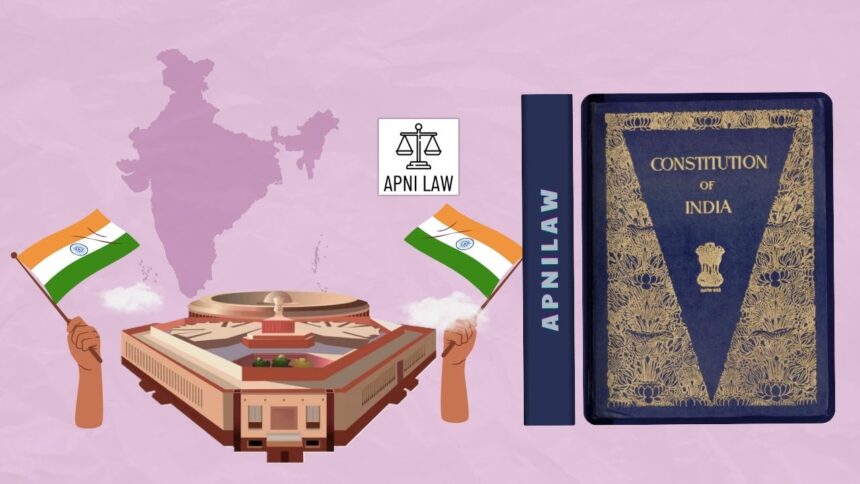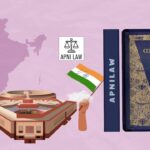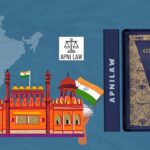Introduction
National integration is the backbone of India’s unity and strength. It refers to the process through which people of different regions, religions, languages, and cultures come together to feel a sense of belonging to one nation. For a country as diverse as India, maintaining unity while respecting diversity is not just a political necessity, it is a constitutional commitment.
The framers of the Indian Constitution recognized that India’s vastness and pluralism could become a source of division if not properly managed. Therefore, they created a constitutional framework that upholds equality, justice, and fraternity, values that ensure emotional and political unity among citizens. Over time, this vision has guided India through various social and political challenges.
Meaning and Importance of National Integration
National integration means building a sense of oneness among all citizens regardless of caste, religion, language, or region. It promotes the idea that while Indians may differ in traditions and beliefs, they share common goals, values, and a collective destiny.
This unity is vital for the country’s stability and development. Without it, democracy cannot function effectively, and national progress would be fragmented. A strong sense of integration encourages cooperation, reduces social tensions, and strengthens India’s global identity as a peaceful and pluralistic democracy.
Major Challenges to National Integration
India’s unity has been tested repeatedly due to its deep social, cultural, and regional differences. Some of the most pressing challenges include:
Communalism
Religious intolerance and communal violence have been persistent threats to national unity. When communities are divided along religious lines, it weakens the secular and democratic foundation of the country.
Regionalism
Regional aspirations are natural in a diverse country, but when they take the form of separatist movements, they challenge national integrity. The demand for separate states or autonomy often reflects imbalances in development and political representation.
Linguistic and Cultural Divides
India’s linguistic diversity has been both a source of pride and tension. The linguistic reorganization of states in 1956 balanced many concerns, but disputes over language dominance, such as the Hindi vs. non-Hindi debates, still create friction.
Social Inequality
Social divisions based on caste and economic class continue to hinder unity. When sections of society face exclusion or discrimination, it creates resentment and weakens the spirit of fraternity.
Economic Disparities
Uneven regional development creates feelings of neglect and alienation. Poorer regions often demand special treatment or autonomy, which sometimes leads to political unrest.
Political Exploitation
Political leaders occasionally use caste, religion, or regional identity to secure votes. Such divisive politics damages the national fabric and undermines the idea of collective progress.
Constitutional Measures to Promote National Integration
The Constitution of India contains several provisions designed to strengthen unity in diversity. These provisions aim to create equality, eliminate discrimination, and promote harmony among citizens.
Preamble: The Soul of Integration
The Preamble lays down the ideals of justice, liberty, equality, and fraternity. The word fraternity explicitly emphasizes the spirit of brotherhood among citizens and the unity of the nation.
Fundamental Rights: Equality for All
Part III of the Constitution guarantees equality before the law (Article 14), freedom of religion (Articles 25–28), and protection against discrimination (Articles 15–16). These rights ensure that no citizen is treated unfairly because of religion, caste, or region.
Directive Principles of State Policy
The Directive Principles (Part IV) guide the government in promoting social and economic equality. By aiming to reduce inequalities and provide opportunities for all, these principles strengthen the foundation of national unity.
Fundamental Duties
Added through the 42nd Amendment, the Fundamental Duties (Article 51A) remind citizens of their moral responsibility to respect the Constitution, promote harmony, and preserve India’s composite culture.
Secularism
India’s secular character ensures equal respect for all religions. The state remains neutral in matters of faith, allowing citizens to freely follow any religion. This principle reduces communal tensions and promotes unity.
Federalism with Unitary Bias
India’s federal system gives power to both the Union and the states but allows the Centre to intervene in times of crisis. This balance ensures stability and keeps the country united even in times of regional conflict.
Language Policy
The Official Language Policy under Article 343 recognizes Hindi as the official language while allowing English and other regional languages. The Eighth Schedule protects linguistic diversity by recognizing 22 languages, reinforcing inclusiveness.
Independent Judiciary
The judiciary safeguards constitutional values. Through landmark judgments like Kesavananda Bharati v. State of Kerala (1973), it upheld democracy and the rule of law, both of which are crucial for maintaining unity.
Role of Education and Media
Education is one of the most powerful tools for integration. It instills civic values, tolerance, and respect for diversity among young citizens. Schools and universities play a crucial role in shaping a mindset of unity and social responsibility.
The media also influences public opinion. Responsible journalism can promote harmony and highlight issues of national concern. However, biased or sensationalized reporting can widen divisions, so media ethics are essential for integration.
Government Efforts Toward Integration
Various government initiatives aim to promote unity and reduce regional disparities. Programs like Ek Bharat Shreshtha Bharat, National Integration Council, and Skill India encourage interaction and cooperation across regions. Development schemes in backward areas also reduce inequality and foster inclusiveness.
FAQs
1. What does national integration mean?
National integration means creating a sense of unity and belonging among citizens of different regions, religions, and languages, ensuring that diversity strengthens rather than divides the nation.
2. Which constitutional provisions promote national integration?
Provisions like Fundamental Rights, Directive Principles, Fundamental Duties, and the federal structure help promote equality, secularism, and fraternity, key elements for national integration.
3. What are the major challenges to national integration in India?
Communalism, regionalism, casteism, and economic inequality continue to challenge India’s unity. Political misuse of these divisions further complicates the issue.
Conclusion
National integration is essential for India’s survival as a diverse and democratic nation. The Constitution of India provides a robust foundation for maintaining unity through justice, equality, and fraternity. However, integration cannot rely on laws alone, it requires active participation and goodwill from citizens.
India’s diversity is its greatest strength, but only when accompanied by mutual respect and understanding. Upholding constitutional values and promoting inclusive growth are the true ways to ensure that India remains united, peaceful, and progressive in the years to come.
For any specific query call at +91 – 8569843472








